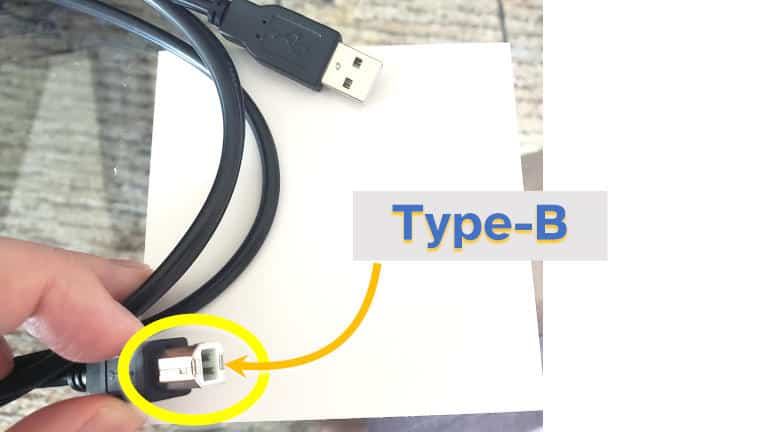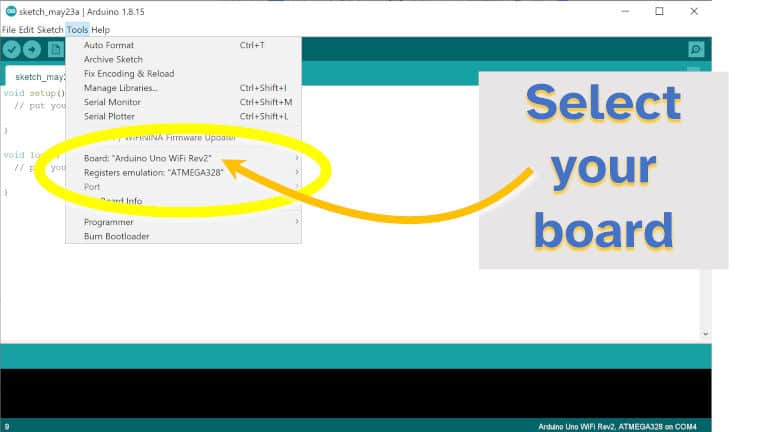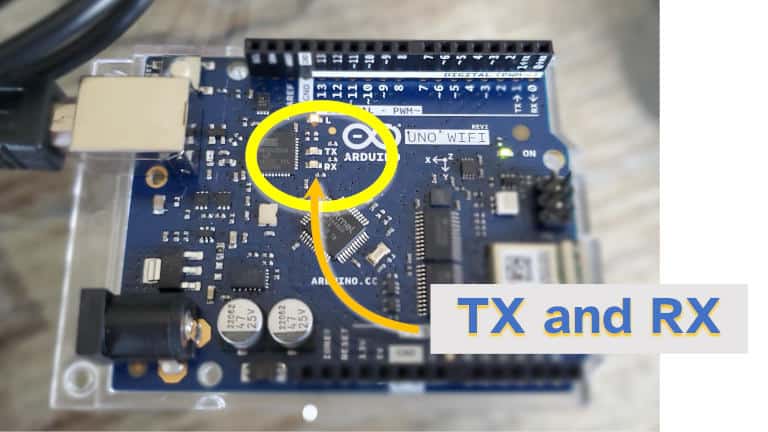How To Upload To Arduino Uno
As an electronics engineer getting dorsum to my roots with Arduino, I plant it could be a little confusing getting started uploading code (or sketches) to an Arduino. Installing drivers, IDEs, and everything else involved wasn't a straightforward chore. Then I put this guide together based on my experience uploading lawmaking to a new Arduino on a new computer.
This guide is a step-by-step (with pictures) on how to upload and run code on an Arduino using a Windows 10 machine. The Arduino I've used is the UNO WiFi Rev 2, though the steps (and problems I solved) should be similar for most Arduino models. Run across common problems at the bottom of this guide if you lot're having any problems post-obit the steps. I've also tended to use sketch and code interchangeably in this guide, a symptom of beingness an electronics and software engineer past preparation.
Step 1: Connect Arduino using a USB Cable
Typically a USB Type-B cablevision is used to connect to an Arduino – information technology has the USB 2.0 Blazon-B connector on one end and the USB two.0 Type-A connector (for a computer on the other).

At the store, I asked for a "USB printer cable" as this is also the sort of cable that is used to connect a computer to a printer. It toll me a few dollars. Whatever standard length seems to be OK, though I imagine it must be shorter than 5 metres (sixteen feet); I ended upwards ownership a 1m cable.
It didn't matter which USB socket I used on my estimator, they all seemed to piece of work fine when communicating with the Arduino, even the USB Blazon-C hub that I use with my laptop allowed me to program the Arduino.
A divide power cable is not required; the USB connection to the reckoner volition power the lath.
Need more than help with which USB cablevision to utilise, or which wires and cables an Arduino requires? I wrote a whole guide on USB cables and wires useful for Arduino, check it out hither: chipwired.com/arduino-cables-and-wires
Step 2: Open the Arduino IDE
The IDE (Integrated Development Environment) is used to write code, compile programs, and upload them to the Arduino for it to execute.
The IDE can be downloaded from Arduino's website here. I used the portable one, so all I had to do was extract it to a folder and run the executable. If installing information technology, follow the steps in the installation wizard to get started – I believe the installation magician has the advantage of taking care of installing the drivers for you. It's the IDE that lets you write code into sketches, compile those sketches into instructions for the processor, and upload those instructions to the Arduino.
If using the portable IDE, you might demand to install drivers (this is what I had to exercise, meet "Problems I encountered" below). The easiest mode I found to install drivers was to run the executable in the drivers folder where I extracted the executable to.

At first my board wasn't listed, I had to click some text in the bottom left of the IDE to update it so that my board was shown. I was having a problem with uploading sketches until I clicked this update. Doing this update ran through the driver install wizard as well (installing an additional driver), only I imagine information technology's a skilful thought to run through the wizard separately anyhow (as I did in a higher place).
Footstep iii: Select the Arduino Board and Port
Under the Tools menu at the acme of the IDE, select your Lath and your Port.

For Board, I found that mine didn't show up at first, and the IDE had selected a like model. This caused me bug later, and so brand sure your board is selected. If your board isn't listed, cheque out the previous steps about installing drivers.
For Port, I found that the IDE automatically selected the correct port as there was only one listed. Some of the inquiry I did said that if there was more than than ane port, effort each of them that'due south non COM1 (apparently Windows never allocates this to an Arduino).
If Port is greyed out information technology ways that the IDE does not believe the Arduino is connected to the calculator. Connect the Arduino and Port will become an option that can be selected. If the Arduino is continued, it means the IDE cannot identify it, accept a wait at installing the drivers as per Pace two.
Step four: Gear up a Sketch (or write some code)
Starting with an instance is the easiest fashion I've plant of testing out a new Arduino and figurer setup, or getting started on your own project.
To use an example sketch, click File and then Examples so Basics and I like to start with the blink case. This volition load a new sketch that contains lawmaking to blink the LED on your board. These examples are already configured for your lath so it should blink the correct LED without any need to modify the code.

Even when starting my own project, I like to use one of these examples as a starting point. Information technology's code and a setup that you know works, which is a good place to start. I then add to the lawmaking to accomplish whatever I'm trying to do.
Arduino code, contained in a sketch, is separated into two sections: A setup, that's run once when the board powers upward (or programming has finished); and a loop that runs in a loop as long every bit there is power to the board. In that location are other ways that code tin can be executed (I'grand thinking interrupts here), merely that'southward some other article's worth of detail.
Step five: Upload Sketch (wait for the Tx and Rx LEDs flashing)
To get the code running on the Arduino, click Sketch and so Upload. The upload step will also practise the verify/compile step, so there'southward no need to click it separately for the purposes of this guide.
The RX and TX LEDs should flicker a fiddling as the IDE sends the code to the board.

I constitute that every bit presently equally uploading the code was consummate, the Arduino started to execute it. This took me a while to realise as the default sketch loaded on my Arduino (UNO WiFi Rev 2) was the Blink one where the LED blinked every second. To exam this, I modified the code to flash unevenly (endeavour changing the delay(twenty) numbers) so that it was obvious my code was running on the board.
If your code is not running on the board, bank check out the section below where I go through some of the problems I encountered.
Finishing Upward
Subsequently following these steps, you should now have:
- An Arduino continued to your computer
- An IDE that uploads lawmaking/sketches from your estimator to your Arduino
- An Arduino that executes the code that was uploaded to it

If you're Arduino is not running the uploaded code, there could exist a few things that went wrong. I've included below how I solved some of the problems I faced when uploading my offset sketch to an Arduino.
Mutual Problems when Uploading Arduino Code
If you lot need help with writing the code for a sketch, I wrote a whole guide on the basics of an Arduino sketch and how to use variables, equations, loops, functions, and more. Cheque it out here: chipwired.com/arduino-programming-linguistic communication-guide
These are the problems I institute when I was trying to write my beginning program to an Arduino:
My Board Wasn't Listed in the IDE
Under the Tools bill of fare you can run into which lath the IDE is intending to upload your plan to. When I opened the IDE for the first time, information technology automatically selected a board that was similar to mine but not exactly the same. I encountered issues uploading the sketch to the board because I had the wrong ane selected; my board wasn't even an choice!
To fix the problem where the target Arduino is non listed in the Tools menu:
- Install the latest drivers from Arduino, these can be found in the drivers folder where the arduino.exe file is stored
- Install any updates for the IDE, look in the bottom left-hand corner when the IDE is first opened – it will alert y'all here if there are whatsoever necessary updates
Wrong COM Port or COM Port Greyed Out
Usually this is due to the wrong drivers beingness installed for the board you're using.
If you've installed all the drivers and your board is selected in the IDE (see above) but the COM Port still isn't right, I've heard that updating the drivers in the Windows Device Manager is the style to set this
Developer is not responding
When I first tried to upload a sketch to my Arduino an fault popped up maxim something like avrguy: developer is not responding.
From my experience in microcontroller electronics (I'm relatively new to Arduino), the Arduino that runs your lawmaking tin can be a separate lath to the device that records the programme to the Arduino (the 'programmer'). On my start Arduino (an UNO WiFi Rev 2), the programmer and the microprocessor are part of the same board. Other Arduinos might have dissimilar configurations – e.g. having a split programmer can save infinite as it doesn't always need to be attached.
To fix this problem:
- Ensure the right lath is selected in the Tools menu of the IDE
- If there is an option to select the Programmer (in the Tools menu), and so make sure the correct programmer is selected
- Ensure the right drivers for your Arduino (and programmer if split) are installed on your computer – see the steps above on how to do this
After many years abroad from electronics projects, Chris recently dived back in by picking upward an Arduino. This guide was written based on his starting time experiences setting upwards a computer to plan an Arduino.
Source: https://chipwired.com/uploading-code-arduino/
Posted by: seegerlivendede.blogspot.com


0 Response to "How To Upload To Arduino Uno"
Post a Comment